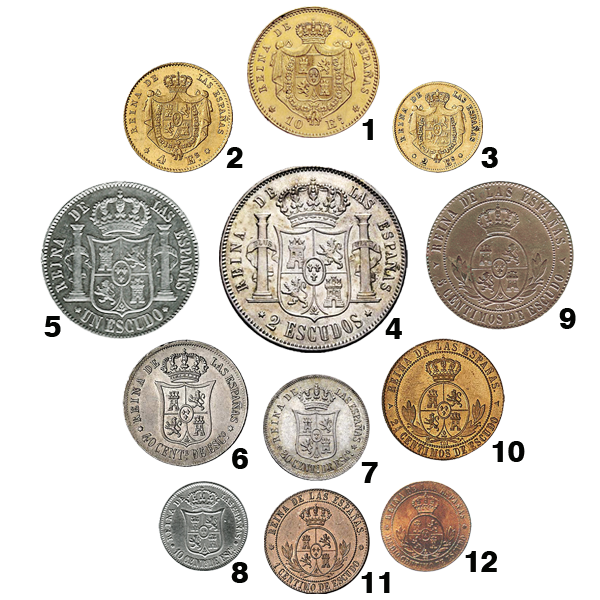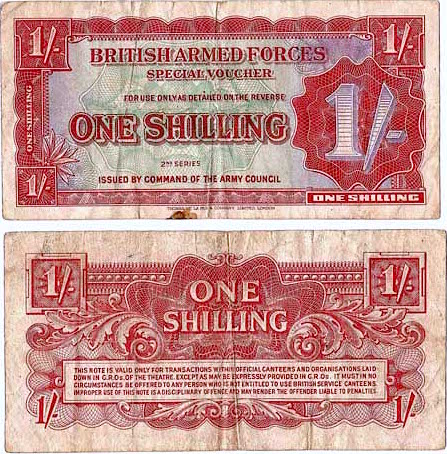|
Juan De Jáuregui (assassin)
Juan de Jáuregui (1562 – March 18, 1582) was killed trying to assassinate Prince William I of Orange. He was a Biscayan by his birth in Bilbao. In 1582, he was in the service of a Spanish fur merchant, Gaspar de Añastro from Vitoria, who resided at Antwerp. De Añastro had lost three ships and was tempted by the supposed reward of 80,000 ducats and the habit of the Order of Santiago offered by Philip II of Spain for the assassination of William the Silent, prince of Orange, and being himself without courage to undertake the task, De Añastro (with the help of his cashier Antonio de Venero, a 19-year-old also from Bilbao, and the Dominican friar Antonio Timmerman, from Dunkirk) persuaded his poor accounting assistant Jáuregui to attempt the murder for the sum of 2877 crowns. Jáuregui had been convinced not only that heaven would smile on his attempt, but that he would become invisible immediately afterwards, and thus escape easily. On Sunday, March 18, 1582, as the prince ... [...More Info...] [...Related Items...] OR: [Wikipedia] [Google] [Baidu] |
Spanish Escudo
The escudo was either of two distinct Spanish currency denominations. Gold escudo The first escudo was a gold coin introduced in 1535/1537, with coins denominated in escudos issued until 1833. It was initially worth 16 '' reales''. When different reales were introduced, the escudo became worth 16 ''reales de plata'' in 1642, then 16 ''reales de plata fuerte'' or 40 ''reales de vellón'' from 1737. Coins Gold coins were issued in denominations of , 1, 2, 4 and 8 escudos, with the 2 escudos coin known as the doubloon. Between 1809 and 1849, coins denominated as 80, 160 and 320 reales (de vellon) were issued, equivalent, in gold content and value, to the 2, 4 and 8 escudo coins. Most were minted in Madrid, marked with a superscripted M or in Seville bearing an S below and left of the Royal Coat of Arms. The mintmaster's initials appeared on the opposite side. Silver escudo The second escudo was the currency of Spain between 1864 and 1869. It was subdivided into 100 ''céntimos de ... [...More Info...] [...Related Items...] OR: [Wikipedia] [Google] [Baidu] |
Basque Nationalism
Basque nationalism ( eu, eusko abertzaletasuna ; es, nacionalismo vasco; french: nationalisme basque) is a form of nationalism that asserts that Basques, an ethnic group indigenous to the western Pyrenees, are a nation and promotes the political unity of the Basques, today scattered between Spain and France. Since its inception in the late 19th century, Basque nationalism has included separatist movements. Basque nationalism, spanning three different regions in two states (the Basque Autonomous Community and Navarre in Spain, and the French Basque Country in France) is "irredentist in nature" as it favours political unification of all the Basque-speaking provinces. History Fueros and Carlism Basque nationalism is rooted in Carlism and the loss, by the laws of 1839 and 1876, of the Ancien Régime relationship between the Spanish Basque provinces and the crown of Spain. During this period, the reactionary and the liberal brand of the pro-''fueros'' movement pleaded for t ... [...More Info...] [...Related Items...] OR: [Wikipedia] [Google] [Baidu] |
ETA (separatist Group)
ETA, an acronym for Euskadi Ta Askatasuna ("Basque Homeland and Liberty"ETA BASQUE ORGANIZATION Encyclopaedia Britannica 20 October 2011 or "Basque Country and Freedom"), was an armed Basque nationalism, Basque nationalist and far left separatism, separatist organization in the Basque Country (greater region), Basque Country (in northern Spain and southwestern France). The group was founded in 1959 and later evolved from a group promoting traditional Basque culture to a paramilitary group engaged in a violent campaign of bombing, assassinations, and kidnappings in the Southern Basque Country and throughout Spanish territory. Its goal was gaining independence for the Basque Country. [...More Info...] [...Related Items...] OR: [Wikipedia] [Google] [Baidu] |
Jon Juaristi
Jon Juaristi Linacero (born in Bilbao in 1951) is a Spanish poet, essayist and translator in Spanish and Basque, as well as a self-confessed former ETA militant.''Jon Juaristi'', article at '' El Mundo'' He lives in . Biography Education and employment A Ph.D. in Romance , he studied at the |
Christ Of Burgos
Jesus, likely from he, יֵשׁוּעַ, translit=Yēšūaʿ, label=Hebrew/Aramaic ( AD 30 or 33), also referred to as Jesus Christ or Jesus of Nazareth (among other names and titles), was a first-century Jewish preacher and religious leader; he is the central figure of Christianity, the world's largest religion. Most Christians believe he is the incarnation of God the Son and the awaited Messiah (the Christ) prophesied in the Hebrew Bible. Virtually all modern scholars of antiquity agree that Jesus existed historically. Research into the historical Jesus has yielded some uncertainty on the historical reliability of the Gospels and on how closely the Jesus portrayed in the New Testament reflects the historical Jesus, as the only detailed records of Jesus' life are contained in the Gospels. Jesus was a Galilean Jew who was circumcised, was baptized by John the Baptist, began his own ministry and was often referred to as "rabbi". Jesus debated with fellow Jews on ... [...More Info...] [...Related Items...] OR: [Wikipedia] [Google] [Baidu] |
Hondarribia
Hondarribia ( eu, Hondarribia; es, Fuenterrabía; french: Fontarrabie) is a town situated on the west shore of Bidasoa river's mouth, in Gipuzkoa, in Basque Country (autonomous community), Basque Country, Spain. The border town is situated on a little promontory facing Hendaye (France) over the Txingudi bay. A service boat makes the trip between the two cities. The town holds an ancient old quarter with walls and a castle. In addition, Hondarribia features a beach across the Bidasoa from the touristy housing estate ''Sokoburu'' in Hendaye, alongside a mountain called Jaizkibel providing a hilly backdrop to the town. A road leads north-east from the beach area to the Cape Higuer, located in this municipality. The town harbours the San Sebastian Airport, which serves domestic flights. The population as of 2005 is 15,700 inhabitants. Battles The battles fought for possession of this fortified stronghold are generally known by the Spanish name for the place (Fuenterrabía). * Unsucc ... [...More Info...] [...Related Items...] OR: [Wikipedia] [Google] [Baidu] |
Our Lady Of Guadalupe
Our Lady of Guadalupe ( es, Nuestra Señora de Guadalupe), also known as the Virgin of Guadalupe ( es, Virgen de Guadalupe), is a Catholic title of Mary, mother of Jesus associated with a series of five Marian apparitions, which are believed to have occurred in December 1531, and a venerated image on a cloak enshrined within the Basilica of Our Lady of Guadalupe in Mexico City. The basilica is the most-visited Catholic shrine in the world, and the world's third most-visited sacred site. Pope Leo XIII granted the image a decree of canonical coronation on 8 February 1887 and was pontifically crowned on 12 October 1895. Description of Marian apparitions According to ''Nican Mopohua'', a 17th-century account written in the native Nahuatl language, the Virgin Mary appeared four times to Juan Diego, an indigenous Mexican peasant Chichimec and once to his uncle, Juan Bernardino. The first apparition occurred on the morning of Saturday, 9 December 1531 (Julian calendar, which is De ... [...More Info...] [...Related Items...] OR: [Wikipedia] [Google] [Baidu] |
Our Lady Of Arantzazu
Our Lady of Aránzazu (''Nuestra Señora de Aránzazu'') is a Roman Catholic title of the image of the Blessed Virgin Mary venerated in San Mateo, Rizal, Philippines. The image is widely known due to claims of miraculous healing and flood safety. It further retained its standing posture despite the controversy of its original image in Oñati, Spain being seated. Pope Francis granted a pontifical decree of canonical coronation on 17 June 2016. The coronation took place on 31 May 2017. History The history of Christianity in San Mateo, Rizal dates back to the early Spanish era of 1596, when the Augustinians friars built the first settlements in the place. On 29 August 1596, the first parish was built under and in honor of the patron Saint Matthew. On 6 December 1696, the Jesuits came and gained control of the town. The history of the Nuestra Señora de Aránzazu (''also known as Birhen ng Bayang San Mateo'') in San Mateo, Rizal dates back to the early Spanish era of 170 ... [...More Info...] [...Related Items...] OR: [Wikipedia] [Google] [Baidu] |
Our Lady Of Begoña
The cult of Our Lady of Begoña (''Nuestra Señora de Begoña, la Madre de Dios de Begoña'') celebrates an apparition of the Virgin Mary at the site of the Basilica of Begoña, in Bilbao, Spain. Affectionately called "Amatxu" (meaning "little mother" in Basque), she is said to have appeared to local people in the early 16th century. The feast day of Our Lady of Begoña is 11 October. History The title was established in Bilbao, at Biscay, Spain where, according to local legend, an 8th-century statue of Our Lady was found the hollow of an oak tree on Mount Artagan. In 1672, the Lord of Vizcaya published and engraving of the Virgin along with his coat of arms. The Basque Country has a long tradition of fishing and seafaring. Basque ship captains travelled regularly to the ports of France, England, the Netherlands and Ireland. Since the 15th century many boats out of Bilbao have carried the name, ''Virgin of Begoña'' or simply ''Begoña''. In 1779 Captain Jaun Bautista de Ajeo and ... [...More Info...] [...Related Items...] OR: [Wikipedia] [Google] [Baidu] |
Jesus Christ
Jesus, likely from he, יֵשׁוּעַ, translit=Yēšūaʿ, label=Hebrew/Aramaic ( AD 30 or 33), also referred to as Jesus Christ or Jesus of Nazareth (among other names and titles), was a first-century Jewish preacher and religious leader; he is the central figure of Christianity, the world's largest religion. Most Christians believe he is the incarnation of God the Son and the awaited Messiah (the Christ) prophesied in the Hebrew Bible. Virtually all modern scholars of antiquity agree that Jesus existed historically. Research into the historical Jesus has yielded some uncertainty on the historical reliability of the Gospels and on how closely the Jesus portrayed in the New Testament reflects the historical Jesus, as the only detailed records of Jesus' life are contained in the Gospels. Jesus was a Galilean Jew who was circumcised, was baptized by John the Baptist, began his own ministry and was often referred to as "rabbi". Jesus debated with fellow Jews on ho ... [...More Info...] [...Related Items...] OR: [Wikipedia] [Google] [Baidu] |
Vouch
A voucher is a bond of the redeemable transaction type which is worth a certain monetary value and which may be spent only for specific reasons or on specific goods. Examples include housing, travel, and food vouchers. The term voucher is also a synonym for receipt and is often used to refer to receipts used as evidence of, for example, the declaration that a service has been performed or that an expenditure has been made. Voucher is a tourist guide for using services with a guarantee of payment by the agency. The term is also commonly used for school vouchers, which are somewhat different. In tourism Vouchers are used in the tourism sector primarily as proof of a named customer's right to take a service at a specific time and place. Service providers collect them to return to the tour operator or travel agent that has sent that customer, to prove they have given the service. So, the life of a voucher is as below: # Customer receives vouchers from tour operator or travel agen ... [...More Info...] [...Related Items...] OR: [Wikipedia] [Google] [Baidu] |





